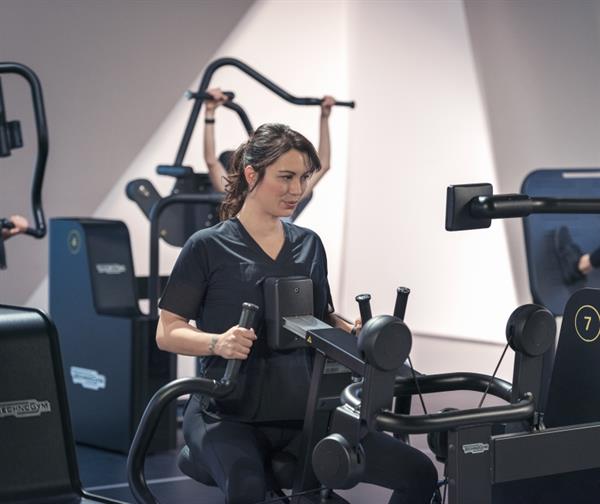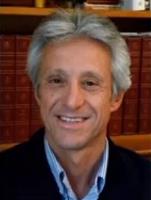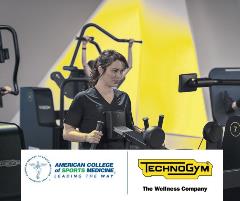Marco Narici, Ph.D. |
Dec.
5, 2019

Technogym and ACSM recently hosted an industry-presented webinar with Marco Narici, Ph.D., entitled Skeletal Muscle Adaptations to Concentric and Eccentric Loading. This is Part I of the Q&A.

Read Part 2 of the Q&A here.
Several questions were asked by attendees during the webinar and the answers pertaining to rehabilitation, viscous training and more are below.
Q: How did you come up with viscous mode?
Viscous mode come up thanks to the possibilities allowed by the Biostrength motor. Having a training modality, where both the lifted ‘load’ and the related ‘muscular tension’ depend on the movement speed: the higher the movement speed the higher the load.
Q: Is there any thought/possibility in using this equipment in a micro-gravity environment?
Definitely, yes! This equipment probably represents the best solution to train in microgravity, simply because it is based on an electrical motor providing a wide range of contraction modes.
Q: Would a 10 second isometric contraction at the beginning of the movement cause recruitment of all motor units?
10 seconds are more than enough to recruit the highest number of motor unit; 5-6 seconds would be best to achieve full motor unit activation without developing fatigue.
Q: Did you study the pattern of muscle growth using the Biostrength machine?
We will shortly start a study to evaluate the chronic effects of using the viscous resistance mode on muscle hypertrophy.
Q: So does the result for viscous training have relevance or correlation to water exercise?
We can consider water a ‘viscous’ medium. However, differently from water, which has a viscosity with little variations (depending on temperature, salt concentration), that of the Biostrength machines can be changed, simulating water, oil, honey, etc., making it ‘less’ or ‘harder’ to move though the medium.
Q: If you compensate the load in the ECC to maintain fiber recruitment, what is the effect of strength improvements? Are they even greater than currently seen with uncompensated loads?
There are already evidences showing that you would increase strength on both concentric and eccentric conditions.
Q: Are the results obtained with the Biostrength machinery comparable to any results studied with conventional rubber bands?
The Biostrength machines feature the elastic contraction, so the answer is yes.
Q: Could you equate viscous training to running in water?
Even if the viscosity would be set similar to water, running is a different movement compared to a leg press exercise. The training modality would be the same but the movement pattern different, so it would be difficult to equate the two. The real advantage of the Biostrength machines is that the viscosity of the fluid can be changed, simulating water, oil, honey, etc.; i.e., making it ‘less’ or ‘harder’ to move through the medium.
Q: Have you found any additional ways to train eccentrically other than using the Technogym leg press?
We investigated mainly the possibilities offered by the new ‘BIODRIVE’, the motor which is the heart of Biostrength machines. However, Technogym has created a complete line of products with this capability, not only the Leg Press. The other machines are: Chest Press, Lat Pull Down, Leg Curl, Leg Extension, Shoulder Press, Abdominal Crunch, Low Row.
Q: What produced the greatest amount of hypertrophy between the viscous, elastic, or traditional weightlifting models?
This is difficult to say since the viscous modality was not fully investigated so far. Certainly, elastic modality does not offer the best way to increase hypertrophy. We shall shortly compare the effects of training using viscous mode to the conventional weight-lifting mode, so look out for the results of this study!
Q: Is the Biostrength technology available in any home gym machines (vs commercial)?
This technology is available only on commercial machines: on Chest Press, Lat Pull Down, Leg Curl, Leg Extension, Shoulder Press, Abdominal Crunch, Lower Back, Low Row.
Q: How often do you want to overload the muscles eccentrically? More muscle hypertrophy would result in more recovery and rest? Training with eccentric overload should be performed ideally 3-4 times per week to maximize hypertrophy.
Q: I may have missed this. Did you say that when using elastic bands for muscle development the client should use a heavy resistance and do it quicker vs slower? Yes, the quicker the better to reach a higher recruitment of motor units.
Q: Is elastic loading the same as accommodating resistance or is there a distinction?
If by accommodating resistance we intend a resistance that can be modulated according to the modification of another external variable (e.g., range of motion), elastic is not an accommodating resistance since its variations depends simply on the elastic module of the elastic itself. Otherwise, an accommodating resistance can be obtained with isotonic selectorized machines equipped with physio camme.
Q: But how do we mimic the elastic training without the machine?
Very simple, with an elastic.
Q: Why is viscous training particularly suited to rehabilitation?
The great advantages of using viscous training in rehabilitation are:
- There is not a predetermined load. With the viscous mode the load is always generated by the patient’s capabilities. The more you ‘push’ the higher the load.
- If the patient feels pain or discomfort throughout the exercise, he/she can push less but still perform the movement and if he/she stops ‘pushing’, the load goes immediately to zero.
Q: How would you recommend replicating the ECC+ load with clients and patients if you don't have a Biostrength machine?
It would be very complex. At the moment there are no other commercial machines that allow you to use an adjustable overload eccentric training on various equipment. Also, the ECC overloading with the Biostrength machine has been purposely designed to optimize motor unit recruitment.
Q: For older adults, should they do more concentric or eccentric training supported by a personal trainer, to obtain better balance and strength?
Training should involve both CON and ECC training. Significant hypertrophy and strength gain may be obtained training at 60% 1RM, this intensity is recommended for achieving maximum protein synthesis in older people.
Q: Could you please explain what happens to crossbridge cycling during eccentric phase as opposed to concentric phase? During the concentric contraction the myosin head actively pulls the actin filaments over the myosin filament and the muscle shortens. During the eccentric contraction the myosin head resists the lengthening of the muscle by rotating backwards, and in doing so its arm (S2 portion) is stretched. The greater the force of lengthening, the greater the S2 portion stretch.
Q: How many different Biostrength machines are there?
There are 9 different machines: Chest Press, Lat Pull Down, Leg Curl, Leg Extension, Shoulder Press, Abdominal Crunch, Lower Back, Low Row.
Q: How can these different training modalities be helpful in everyday activities?
All training modes of the Biostrength machines (CON, ECC, ECC+, Viscous, Elastic, etc.) can be used in the 9 different machines. For improving performance in everyday activities, the main aim should be that of improving muscle power. To achieve this, the use of moderate loads (not greater than 70% 1RM) and high speed of movement seems ideal.
Q: What is the benefit of increasing pennation angle versus increasing sarcomeres longitudinally?
Increasing muscle pennation will increase muscle size, hence muscle force. Increasing sarcomere number longitudinally (i.e., in series) will increase muscle contraction velocity.
Q: Was increased viscosity more or just as effective at increasing EMG activity compared to increased elasticity?
The increase in EMG, as long as the movement is performed as fast as possible, was similar between the two modes, with a tendency of viscous mode to produce slightly greater EMG (about +10%).
Q: You mentioned that the machine will in essence record the ROM of the person using it. Can this be used to train at specific ROMs to prevent injuries such as ACL tears?
Definitely, yes.
Q: Is there a linear or curvilinear relationship between con:ecc ratio and strength development with training? Does this relation plateau at the 1:1.5 ratio you described?
What we found is that the increase in EMG is linear with the increase in ECC overload. In theory, this should equate to a linear increase in strength (measured isometrically), but this has yet to be shown experimentally.
Q: So does the result for viscous training have relevance or correlation to water exercise?
Water exercise is a type of viscous training but that obtained with the Biostrength machines has a much greater advantage as the viscosity of the fluid can be set at a greater viscosity than that of water, making the training more intense and effective. In fact, a range of values of viscosities can be used.
Presenter: Marco Narici, Ph.D.

Prof. Narici directs the Neuromuscular Research Laboratory at the Department of Biomedical Sciences of the University of Padova (founded in 1222), Italy. He has more than 30 years’ experience in skeletal muscle research applied to training and detraining in young and older individuals.
View Related Technogym Content

Skeletal Muscle Adaptations to Concentric and Eccentric Loading Q&A part 2